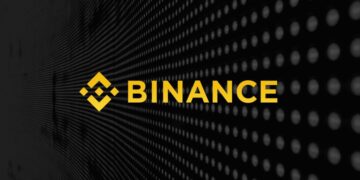As of Sunday within the European Union, the bloc’s regulators can ban the usage of AI techniques they deem to pose “unacceptable danger” or hurt.
February 2 is the primary compliance deadline for the EU’s AI Act, the great AI regulatory framework that the European Parliament lastly accepted final March after years of growth. The act formally went into power August 1; what’s now following is the primary of the compliance deadlines.
The specifics are set out in Article 5, however broadly, the Act is designed to cowl a myriad of use instances the place AI may seem and work together with people, from client purposes by to bodily environments.
Below the bloc’s method, there are 4 broad danger ranges: (1) Minimal danger (e.g., electronic mail spam filters) will face no regulatory oversight; (2) restricted danger, which incorporates customer support chatbots, can have a light-touch regulatory oversight; (3) excessive danger — AI for healthcare suggestions is one instance — will face heavy regulatory oversight; and (4) unacceptable danger purposes — the main target of this month’s compliance necessities — can be prohibited fully.
A few of the unacceptable actions embrace:
- AI used for social scoring (e.g., constructing danger profiles primarily based on an individual’s conduct).
- AI that manipulates an individual’s choices subliminally or deceptively.
- AI that exploits vulnerabilities like age, incapacity, or socioeconomic standing.
- AI that makes an attempt to foretell individuals committing crimes primarily based on their look.
- AI that makes use of biometrics to deduce an individual’s traits, like their sexual orientation.
- AI that collects “actual time” biometric information in public locations for the needs of regulation enforcement.
- AI that tries to deduce individuals’s feelings at work or faculty.
- AI that creates — or expands — facial recognition databases by scraping photos on-line or from safety cameras.
Firms which are discovered to be utilizing any of the above AI purposes within the EU can be topic to fines, no matter the place they’re headquartered. They might be on the hook for as much as €35 million (~$36 million), or 7% of their annual income from the prior fiscal yr, whichever is larger.
The fines gained’t kick in for a while, famous Rob Sumroy, head of know-how on the British regulation agency Slaughter and Might, in an interview with cryptonoiz.
“Organizations are anticipated to be absolutely compliant by February 2, however … the subsequent massive deadline that corporations want to concentrate on is in August,” Sumroy stated. “By then, we’ll know who the competent authorities are, and the fines and enforcement provisions will take impact.”
Preliminary pledges
The February 2 deadline is in some methods a formality.
Final September, over 100 corporations signed the EU AI Pact, a voluntary pledge to start out making use of the ideas of the AI Act forward of its entry into software. As a part of the Pact, signatories — which included Amazon, Google, and OpenAI — dedicated to figuring out AI techniques prone to be categorized as excessive danger below the AI Act.
Some tech giants, notably Meta and Apple, skipped the Pact. French AI startup Mistral, one of many AI Act’s harshest critics, additionally opted to not signal.
That isn’t to counsel that Apple, Meta, Mistral, or others who didn’t conform to the Pact gained’t meet their obligations — together with the ban on unacceptably dangerous techniques. Sumroy factors out that, given the character of the prohibited use instances laid out, most corporations gained’t be partaking in these practices anyway.
“For organizations, a key concern across the EU AI Act is whether or not clear pointers, requirements, and codes of conduct will arrive in time — and crucially, whether or not they are going to present organizations with readability on compliance,” Sumroy stated. “Nevertheless, the working teams are, thus far, assembly their deadlines on the code of conduct for … builders.”
Attainable exemptions
There are exceptions to a number of of the AI Act’s prohibitions.
For instance, the Act permits regulation enforcement to make use of sure techniques that acquire biometrics in public locations if these techniques assist carry out a “focused search” for, say, an abduction sufferer, or to assist stop a “particular, substantial, and imminent” menace to life. This exemption requires authorization from the suitable governing physique, and the Act stresses that regulation enforcement can’t decide that “produces an adversarial authorized impact” on an individual solely primarily based on these techniques’ outputs.
The Act additionally carves out exceptions for techniques that infer feelings in workplaces and faculties the place there’s a “medical or security” justification, like techniques designed for therapeutic use.
The European Fee, the manager department of the EU, stated that it could launch extra pointers in “early 2025,” following a session with stakeholders in November. Nevertheless, these pointers have but to be revealed.
Sumroy stated it’s additionally unclear how different legal guidelines on the books may work together with the AI Act’s prohibitions and associated provisions. Readability might not arrive till later within the yr, because the enforcement window approaches.
“It’s necessary for organizations to do not forget that AI regulation doesn’t exist in isolation,” Sumroy stated. “Different authorized frameworks, equivalent to GDPR, NIS2, and DORA, will work together with the AI Act, creating potential challenges — notably round overlapping incident notification necessities. Understanding how these legal guidelines match collectively can be simply as essential as understanding the AI Act itself.”












![Why Ethereum [ETH] address outflows may be headed for DeFi](https://cryptonoiz.com/wp-content/uploads/2023/03/AMBCrypto_An_image_of_a_stylized_Ethereum_logo_with_arrows_poin_22f2aeff-c7bb-4c7d-aec7-547a37a35e82-1-1000x600-360x180.jpg)





























